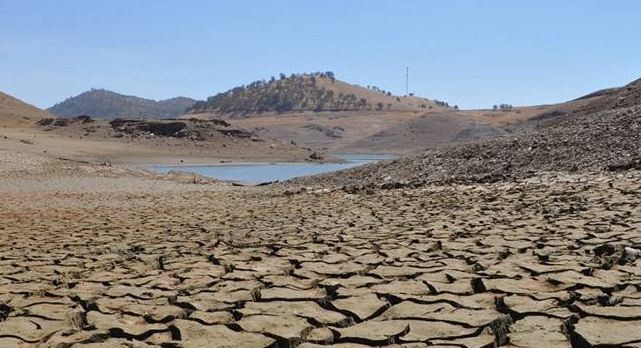The worst droughts in California have historically occurred when conditions were both dry and warm, and global warming is increasing the chance that dry and warm years will coincide and lead to more drought, said researchers from Stanford University in California in a new study.
The study shows California has experienced more frequent drought years over the last two decades than it has in the past several centuries.
That observed spike is primarily the result of rising temperatures in the region. These higher temperatures have climbed to record highs as a result of climate change, said Stanford scientists in a new study published in the March 2 issue of the journal of the Proceedings of the National Academy of Sciences.
A team led by Stanford professor Noah Diffenbaugh examined the role that temperature played in California droughts over the past 120 years. They also examined the effect that human emissions of carbon dioxide and other greenhouse gases have on temperature and precipitation.
The team focused on the influence of global warming in California's past, present and future drought risk.
The team discovered that the worst droughts in California have historically occurred when conditions were both dry and warm, and that global warming is increasing the probability that dry and warm years will coincide.
The findings suggest California could be entering an era when nearly every year that has low precipitation also has temperatures similar to or higher than 2013-14, when the California-wide average annual temperature was the warmest on record.
"Of course low precipitation is a prerequisite for drought, but less rain and snowfall alone don't ensure a drought will happen. It really matters if the lack of precipitation happens during a warm or cool year," Diffenbaugh said.
"We've seen the effects of record heat on snow and soil moisture this year in California, and we know from this new research that climate change is increasing the probability of those warm and dry conditions occurring together."
Diffenbaugh and his team reached their conclusions by analyzing historical observations and computer climate change simulations. They took advantage of recently released data on monthly precipitation, temperature and drought data for California stretching back to 1895.
Using this 120-year observed data set, the scientists calculated the probability of drought years occurring in different temperature and precipitation conditions.
Their analysis revealed that the years that were both warm and dry were about twice as likely to produce a severe drought as years that were cool and dry.
Over the past two decades, nearly all of the years in California have been either warm or hot.
"Now the temperature coin is coming up tails most years," Diffenbaugh said. "So, even though the precipitation coin is still coming up tails only half the time, it means that over the past two decades we have gotten two tails - warm and dry - in half the years, compared with only a quarter of years in the preceding century."
The team also used climate models to investigate the role of global warming in driving the observed warming trend, and the associated increase in drought.
The results were clear: Even though climate change to date has not substantially reduced yearly precipitation, human emissions are clearly implicated in California's statewide warming, and in the increased probability that dry years are also warm.



























